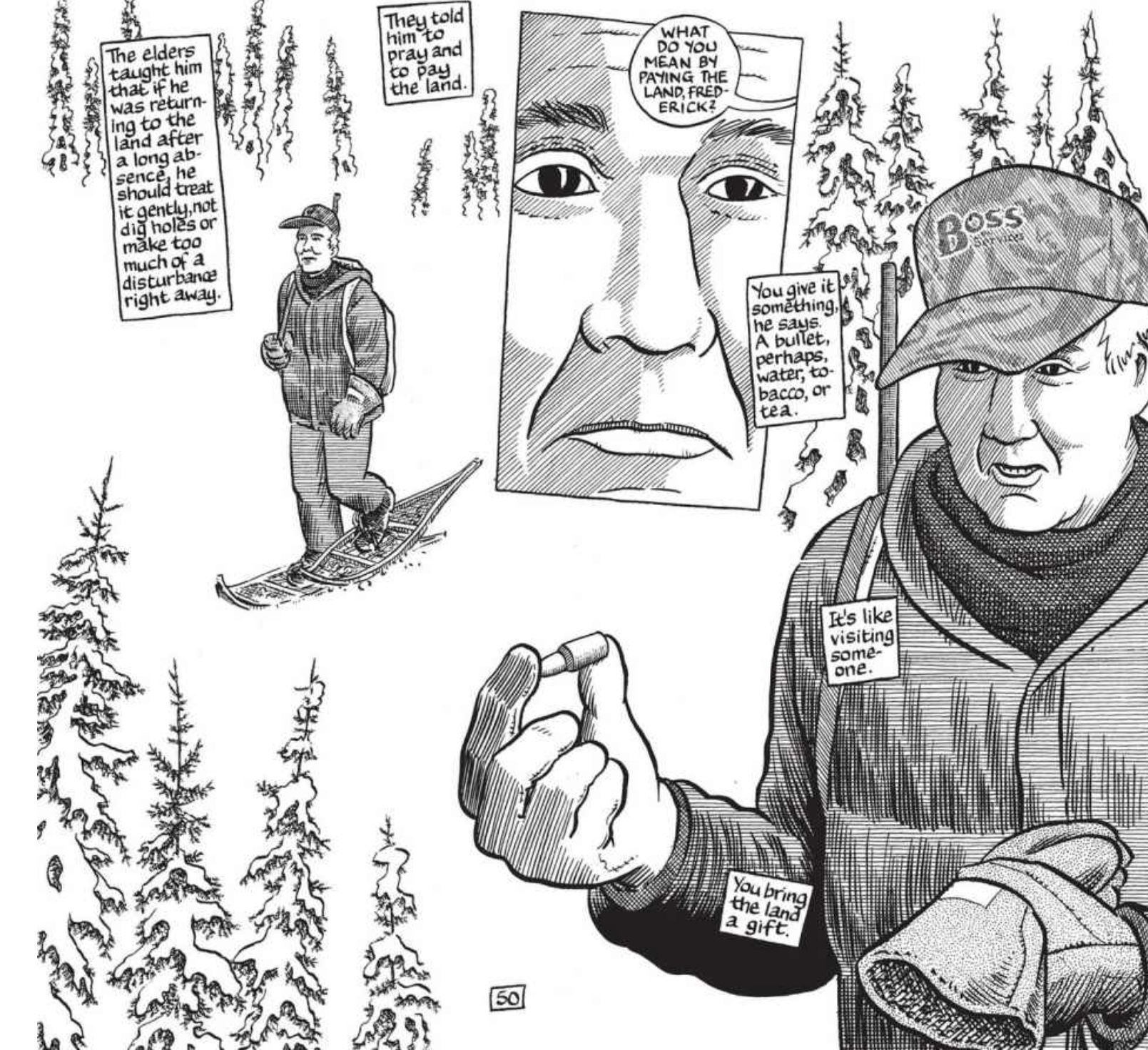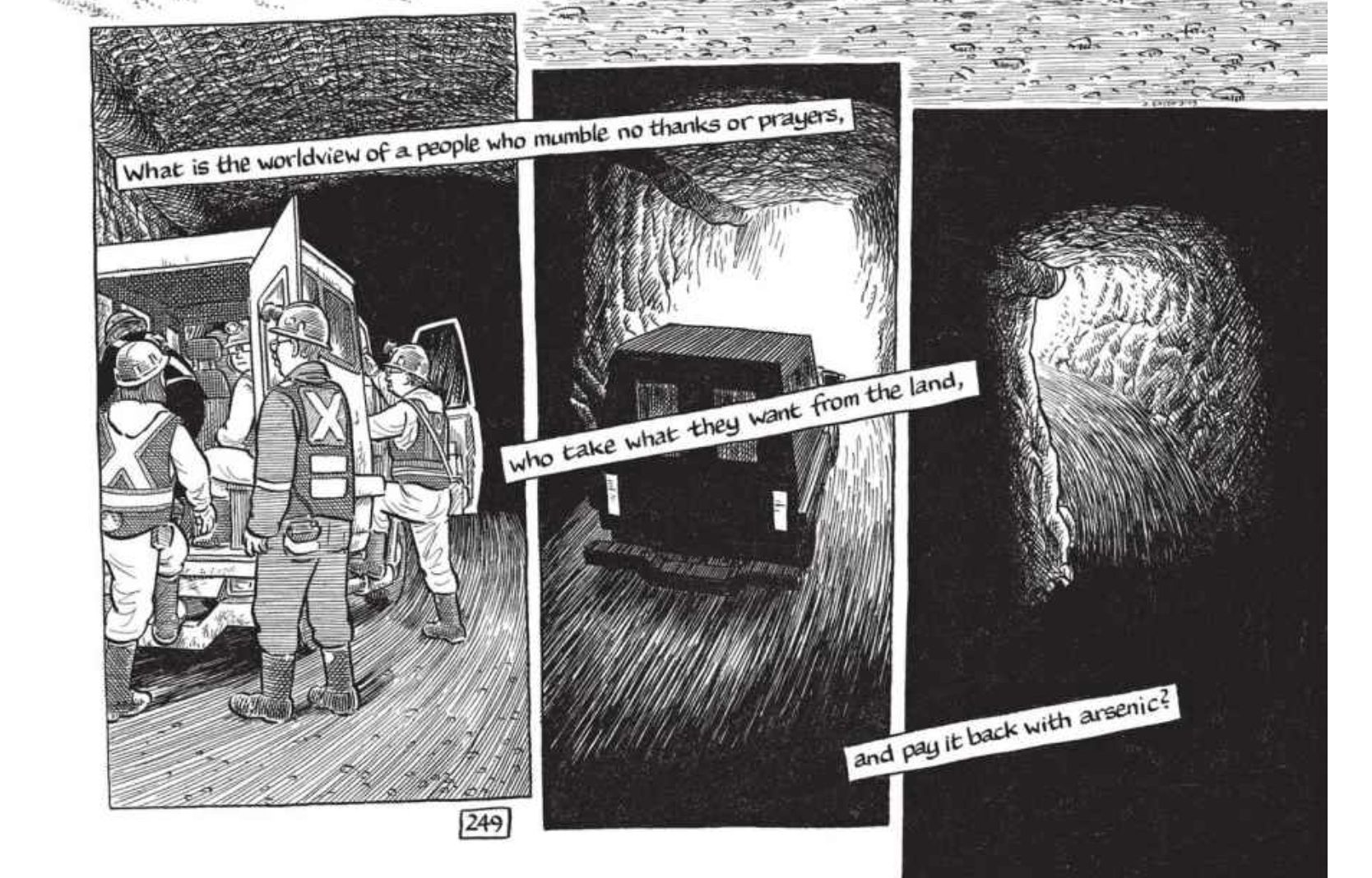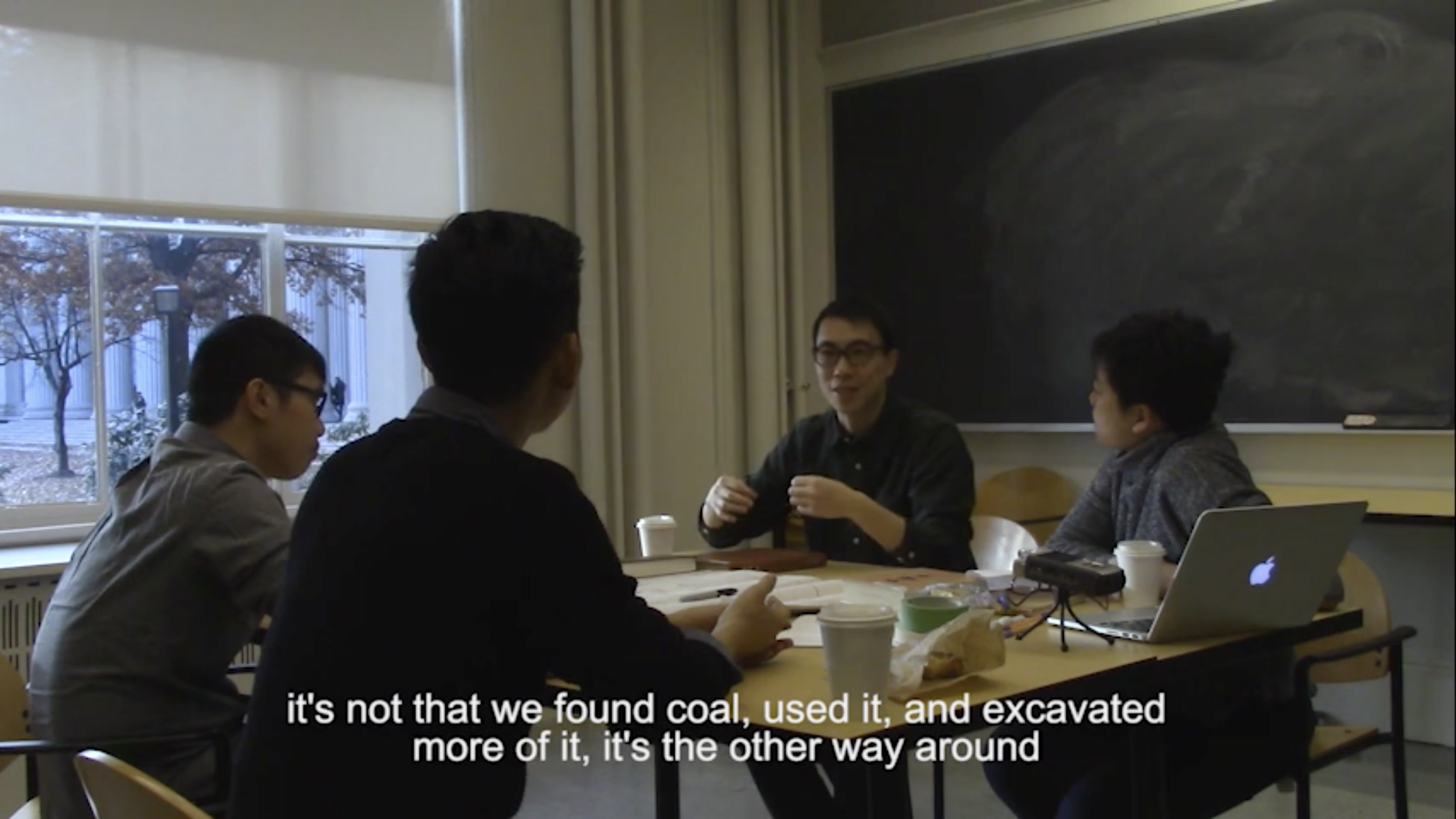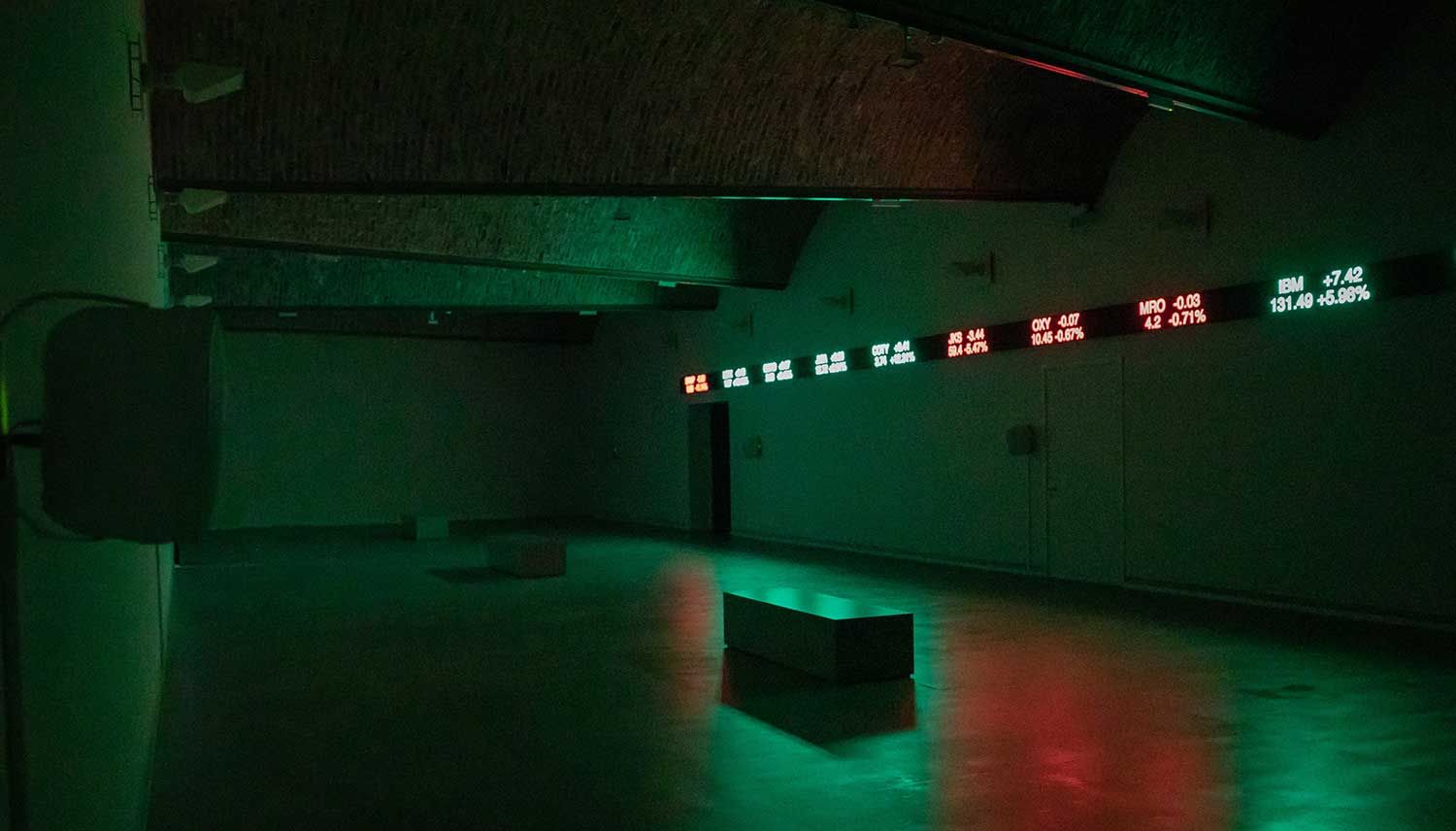In an article about how climate change has already transformed everything about contemporary art, William Smith suggests that “framing the climate as a distinct concept for art, another notion to explore, creates an illusion of intellectual distance. But the reality of climate change isn’t a topic for some art to address; rather, it is a historical condition that informs all contemporary art.” Trying to put forward a critical methodology for grappling with this condition, he turns to “ecocriticism” which has gained currency in literary studies as an approach for addressing the implications of ecological upheaval.
In a similar spirit, I read Paying the Land (2020) by Joe Sacco together with Nolan Dennis, an interdisciplinary artist whose practice explores what he calls a ‘black consciousnesses of space’ or, the material and metaphysical conditions of decolonization. Dennis’ work questions the politics of space and time through a system-specific, rather than site-specific approach, concerned with the hidden structures that pre-determine the limits of our social and political imagination. As such, I was keen to engage with him on this book, a graphic documentation of resource extraction, debt to the natural world and the displacement of the Dene, an indigenous group of First Nations who inhabit the northern boreal and Arctic regions of Canada.






